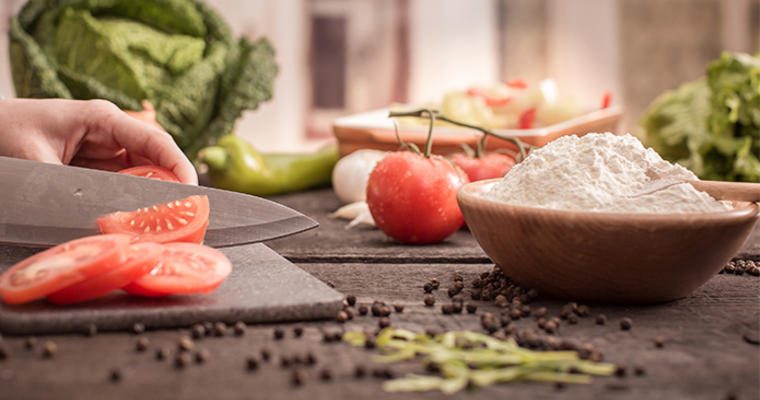Self-serve areas and salad bars are great solutions to help serve students quickly and help with traffic flow in the cafeteria. Salad bars offer great variety for meeting meal pattern requirements, especially for the vegetable sub-groups. Depending on how extensive the salad bar is, students may also be able to create their own entrées.
Self-serve or grab-and-go areas are becoming increasingly popular, especially when serving breakfast. A grab-and-go solution may be a way to quickly serve students during the hectic morning, and you may be able to explore different locations for serving if you use rolling cooler carts.
Regardless of the serving solution, it is important to keep food safety top of mind.
Smart salad bar serving practices
Salad bars will likely include foods considered Time and Temperature Control (TCS) foods. What generally makes these foods a concern is that they contain protein, are moist and have a neutral or slightly acidic pH, great growing conditions for bacteria. At the right temperature, these foods create harmful microorganisms or toxins that rapidly reproduce, leading to foodborne illnesses, most common of which are salmonella and E. coli.
Plant-based foods may get overlooked as TCS foods, but it is important to keep a few things in mind for the most common TCS foods on a salad bar—cut tomatoes and cut leafy greens.
Cut leafy greens
Cut leafy greens need to be stored in the refrigerator to decrease bacterial growth. Studies have shown the survival and growth of E. coli decreases at lower temperatures and increases at higher temperatures. If you have a salad bar, make sure the cut greens are over ice and the temperature is not within the danger zone of 41°F to 135°F (5°C to 57°C).
Cut tomatoes
People usually don’t worry about tomatoes because they are quite acidic and don’t support the traditional environment for bacteria growth. However, once tomatoes are cut they need to be refrigerated, because salmonella can grow on the exposed flesh. According to the Food and Drug Administration, there were multistate salmonella outbreaks related to raw tomatoes and 12 of these outbreaks occurred from 2000 to present. Refrigerating cut tomatoes prevents salmonella growth. Be sure you are maintaining a temperature of 41℉ or less when tomatoes are being stored and also when they are on the serving line.
Maintain TCS food safety
Here are some reminders for other TCS foods in salad bar or self-serve areas:
- Cold foods must be maintained at 41℉ or below.
- Hot food must be maintained at 135℉ or above.
- Food must pass through the temperature danger zone quickly to reduce the growth of pathogens. First the food must be cooled from 135℉ to 70℉ within two hours, then cooled to 41℉ or lower in the next four hours.
Best practices for TCS foods
Control cross-contamination on the salad bar as another way to keep foods safe. Remember, for salad bars in K-5, all foods should be pre-wrapped or food should be served to students based on the choices they make. Another option is to have pre-packaged salads in the grab-and-go area. This ensures reimbursable meal components are met at the same time it helps prevent cross-contamination.
The Child Nutrition Institute resource “Best Practices for Handling Fresh Produce in Schools” reviews additional important considerations:
- Timing is key: Reduce the amount of time produce is out by having salad bar setup as one of the last steps before meal service.
- Check and record: Every 30 minutes assign someone to monitor and record internal temperatures on any self-serve food area.
- Teach: Take the time to instruct younger students about a few things to keep everyone safe, such as not tasting or returning items, always using serving utensils and keeping their head outside of the sneeze guard.
- Awareness: Take the time to clearly label as many things as possible to reduce the desire to taste.











